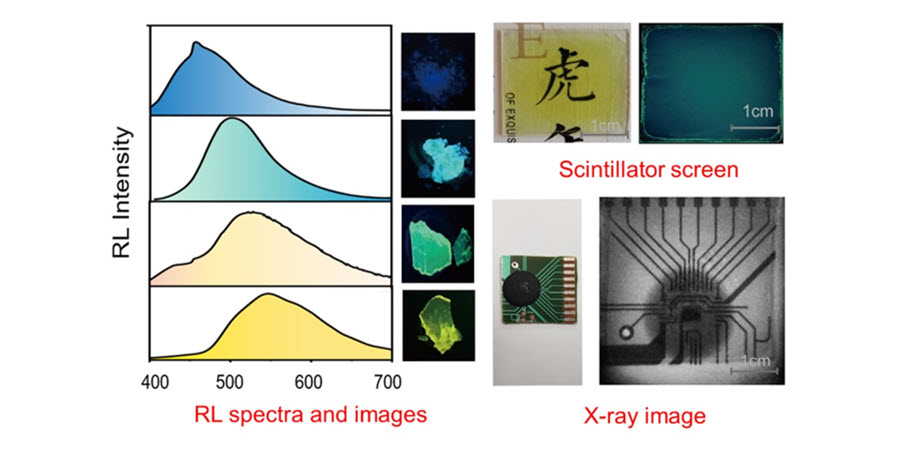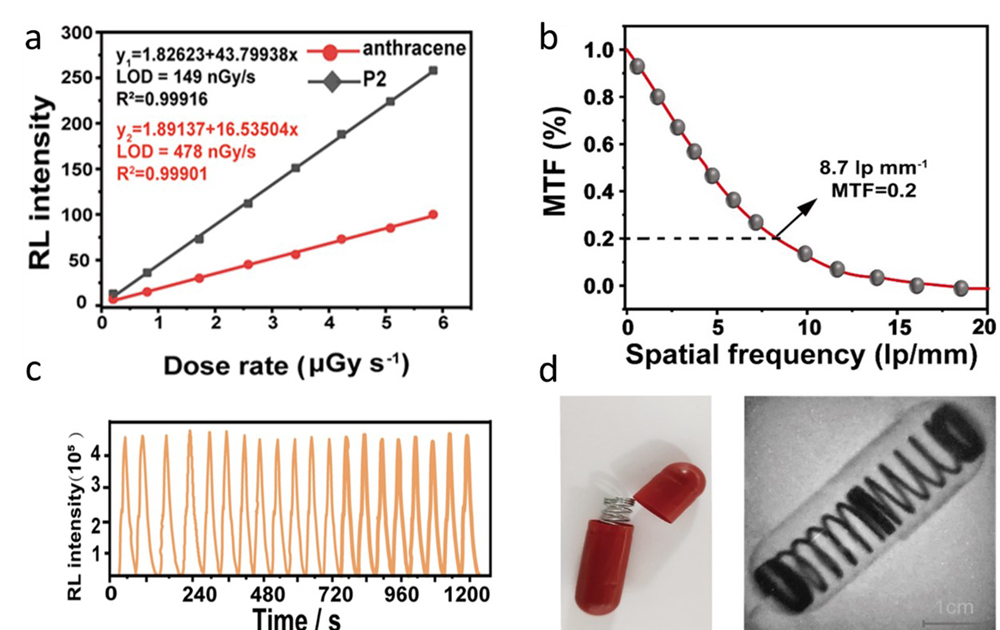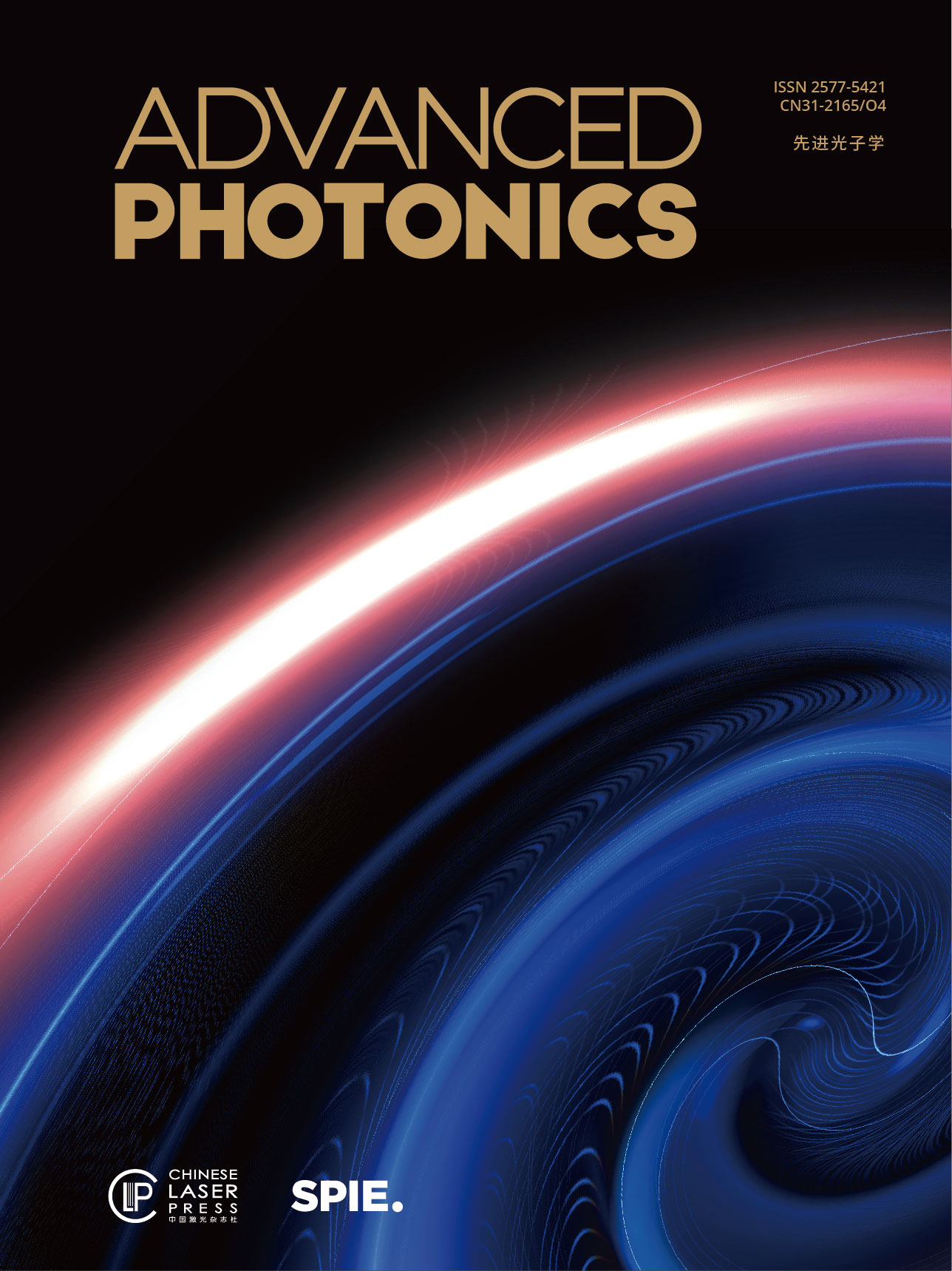
Amorphous polymeric scintillators that exhibit multiple radioluminescence colors will contribute to high-resolution X-ray imaging. Credit: Wei et al., doi 10.1117/1.AP.4.3.035002
X-ray detection is of great importance in diverse applications, such as radiation detection, medical diagnosis, and security inspection. A popular way to achieve X-ray detection is to integrate a photodetector with a luminescent material called a scintillator, which emits energy in the form of light. Scintillators can convert high-energy X-ray photons to low-energy visible luminescence.
Presently, X-ray scintillators commonly use inorganic materials or heavy metal complexes. These scintillators perform well but have several intrinsic disadvantages, including toxicity, harsh preparation conditions, and the high cost of rare metal resources. Developing new designs for efficient, metal-free X-ray scintillators is challenging, yet it is widely recognized that pure organic scintillators offer distinct advantages over inorganic: they are low cost, flexible, and easy to prepare. Still, recent progress in efficient radioluminescence has mainly focused on small molecules, or monomers, which are inevitably associated with processability and repeatability issues.
Researchers from Nanjing University of Posts and Telecommunications (NUPT, China) recently reported an effective strategy for preparing radioluminescent polymeric scintillators that exhibit multiple emission colors. The organic polymers range in emission color from blue to yellow, with high brightness in an amorphous state. Their brightness is due to radical copolymerization of negatively charged polyacrylic acid and different positively charged quaternary phosphonium salts. One of the obtained polymers (P2) exhibits high photostability under a high X-ray irradiation dosage (27.35 Gy) and has a detection limit of 149 nGy s–1, a performance superior to that of conventional anthracene-based scintillators.
As reported in Advanced Photonics, the researchers successfully used the organic polymeric scintillators for X-ray radiography. First, they fabricated a transparent scintillator screen, which was accomplished by simply drop-casting of these polymeric materials on the quartz plate, due to their excellent processability. Then they performed X-ray imaging of the scintillator screen through a standard X-ray test pattern plate to measure the maximum possible resolution for radiography using this scintillator screen. They obtained a maximum resolution of 8.7 line pairs (lp) mm-1 at an MTF value of 0.2. These results demonstrate the excellent potential of organic polymers as scintillator screens for high-quality X-ray imaging.

Amorphous polymeric scintillators with multicolor radioluminescence. (a) Behaviors of P2 and anthracene under low-dose-rate X-ray excitation. (b) MTF curves of P2 scintillator screen. (c) The photostability of P2 at 510 nm for continuous X-ray irradiation dosage of 27.35 Gy. (d) Bright field and X-ray images of a metallic spring in capsule using P2 scintillator screen. Image credit: Wei et al., doi 10.1117/1.AP.4.3.035002.
According to corresponding author Qiang Zhao, professor at NUPT Institute of Advanced Materials and State Key Laboratory of Organic Electronics and Information Displays, “This general and straightforward approach for designing metal-free, amorphous polymeric scintillators with multicolor radioluminescence for high-resolution X-ray imaging is a milestone signifying the start of a new avenue of research for low-cost, flexible radioluminescent polymeric materials. We anticipate that the design strategy will be widely adopted by the materials science, photonics, optoelectronics, and bioimaging communities.”
Read the open access article by Wei et al., “Organic room-temperature phosphorescent polymers for efficient X-ray scintillation and imaging,” Adv. Photon. 4(3) 035002 (2022), doi 10.1117/1.AP.4.3.035002.


